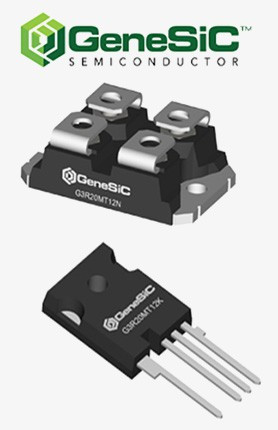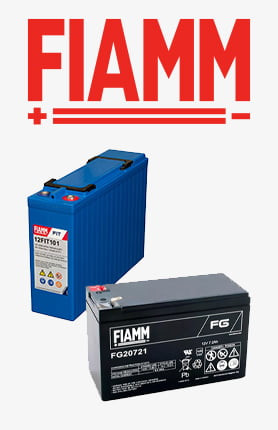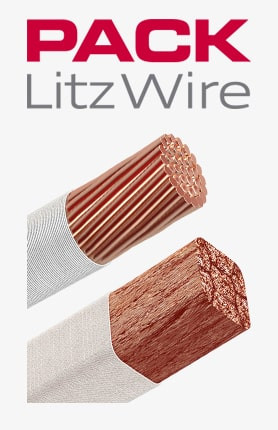Musisz być zalogowany/a
-
WróćX
-
Alkatrészek
-
-
Kategória
-
Félvezetők
- Diódák
- Tirisztorok
-
Elektromosan szigetelt modulok
- VISHAY (IR) elektromosan szigetelt modulok
- INFINEON (EUPEC) elektro-szigetelt modulok
- A Semikron elektromosan szigetelt moduljai
- POWEREX elektroszigetelt modulok
- IXYS elektromosan szigetelt modulok
- Elektro-szigetelt modulok a POSEICO-tól
- Az ABB elektromosan szigetelt moduljai
- Elektro-szigetelt modulok a TECHSEM-től
- Przejdź do podkategorii
- Híd egyenirányítók
-
Tranzisztorok
- GeneSiC tranzisztorok
- Mitsubishi SiC MOSFET modulok
- STARPOWER SiC MOSFET modulok
- ABB SiC MOSFET modulok
- IGBT modulok a MITSUBISHI-tól
- MITSUBISHI tranzisztor modulok
- MITSUBISHI MOSFET modulok
- ABB tranzisztor modulok
- IGBT modulok a POWEREX-től
- IGBT modulok – az INFINEON-tól (EUPEC)
- Szilícium-karbid félvezető elemek
- Przejdź do podkategorii
- Drivers
- Tápblokkok
- Przejdź do podkategorii
- LEM áram- és feszültségátalakítók
-
Passzív alkatrészek (kondenzátorok, ellenállások, biztosítékok, szűrők)
- Ellenállások
-
Biztosítékok
- Miniatűr biztosítékok ABC és AGC sorozatú elektronikus rendszerekhez
- Gyors működésű cső alakú biztosítékok
- Késleltetett lapkák GL/GG és AM karakterisztikával
- Ultragyors biztosítékok
- Brit és amerikai szabványos gyors működésű biztosítékok
- Gyors működésű európai szabványú biztosítékok
- Vontatási biztosítékok
- Nagyfeszültségű biztosítékok
- Przejdź do podkategorii
-
Kondenzátorok
- Kondenzátorok motorokhoz
- Elektrolit kondenzátorok
- Jégfilm kondenzátorok
- Teljesítménykondenzátorok
- Kondenzátorok egyenáramú áramkörökhöz
- Teljesítménykompenzációs kondenzátorok
- Nagyfeszültségű kondenzátorok
- Kondenzátorok indukciós fűtéshez
- Impulzuskondenzátorok
- DC LINK kondenzátorok
- Kondenzátorok AC/DC áramkörökhöz
- Przejdź do podkategorii
- Interferencia szűrők
- Szuperkondenzátorok
- Túlfeszültség elleni védelem
- TEMPEST Felfedő emissziós szűrők
- Przejdź do podkategorii
-
Relék és kontaktorok
- Relék és kontaktorok elmélete
- AC háromfázisú félvezető relék
- DC szilárdtest relék
- Szabályozók, vezérlőrendszerek és tartozékok
- Lágyindítás és irányváltó kontaktorok
- Elektromechanikus relék
- Kontaktorok
- Forgókapcsolók
-
Egyfázisú AC szilárdtest relék
- Egyfázisú váltakozó áramú szilárdtestrelék, 1. sorozat | D2425 | D2450
- Egyfázisú AC szilárdtest relék CWA és CWD sorozat
- Egyfázisú AC szilárdtest relék CMRA és CMRD sorozat
- Egyfázisú AC félvezető relék PS sorozat
- AC szilárdtest relék kettős és négyes sorozatú D24 D, TD24 Q, H12D48 D
- GN sorozatú egyfázisú szilárdtest relék
- Egyfázisú AC szilárdtest relék CKR sorozat
- Egyfázisú AC DIN sínes relék ERDA és ERAA SERIES
- Egyfázisú váltakozó áramú relék 150A áramerősséghez
- Kettős szilárdtest relék DIN sínes hűtőbordával integrálva
- Przejdź do podkategorii
- AC egyfázisú nyomtatható félvezető relék
- Interfész relék
- Przejdź do podkategorii
- Magok és egyéb induktív alkatrészek
- Radiátorok, Varisztorok, Hővédelem
- Ventillátorok
- Klíma, Kapcsolószekrény tartozékok, Hűtők
-
Akkumulátorok, töltők, puffer tápegységek és átalakítók
- Akkumulátorok, töltők - elméleti leírás
- Lítium-ion akkumulátorok. Egyedi akkumulátorok. Akkumulátorkezelő rendszer (BMS)
- Akkumulátorok
- Akkumulátortöltők és tartozékok
- UPS és puffer tápegységek
- Átalakítók és tartozékok napelemekhez
- Energiatárolás
- Hidrogén üzemanyagcellák
- Lítium-ion cellák
- Przejdź do podkategorii
- Automatizálás
-
Kábelek, Litz vezetékek, vezetékek, rugalmas csatlakozások
- Vezetékek
- Kábeltömszelencék és -hüvelyek
- Arcok
-
Kábelek speciális alkalmazásokhoz
- Hosszabbító és kiegyenlítő kábelek
- Hőelem kábelek
- Csatlakozó kábelek PT érzékelőkhöz
- Többeres kábelek hőm. -60°C és +1400°C között
- SILICOUL középfeszültségű kábelek
- Gyújtókábelek
- Fűtőkábelek
- Egyeres kábelek hőm. -60°C és +450°C között
- Vasúti vezetékek
- Fűtőkábelek pl
- Kábelek a védelmi ipar számára
- Przejdź do podkategorii
- pólók
-
Zsinór
- Lapos zsinór
- Kerek fonatok
- Nagyon rugalmas fonat - lapos
- Nagyon rugalmas zsinór - kerek
- Hengeres rézfonatok
- Réz hengeres fonatok és borítások
- Rugalmas földelő hevederek
- Horganyzott és rozsdamentes acélból készült hengeres fonatok
- PVC szigetelt rézfonatok - 85 fokos hőmérsékletig
- Lapos alumínium fonatok
- Csatlakozókészlet - zsinórok és csövek
- Przejdź do podkategorii
- Vontatási berendezések
- Kábelsaruk
- Szigetelt rugalmas sínek
- Többrétegű rugalmas sínek
- Kábelkezelő rendszerek
- Przejdź do podkategorii
- Az összes kategória megtekintése
-
Félvezetők
-
-
- Szállítók
-
Alkalmazások
- Bányászat, kohászat és öntöde
- Berendezések elosztó- és kapcsolószekrényekhez
- CNC gépek
- DC és AC hajtások (inverterek)
- Energetika
- Energia bankok
- Faszárító és -feldolgozó gépek
- Gépek műanyagok hőformázásához
- Hegesztőgépek és hegesztők
- Hőmérséklet mérés és szabályozás
- HVAC automatizálás
- Indukciós fűtés
- Ipari automatizálás
- Ipari védőfelszerelés
- Kutatási és laboratóriumi mérések
- Motorok és transzformátorok
- Nyomtatás
- Robbanásveszélyes zónák alkatrészei (EX)
- Tápegységek (UPS) és egyenirányító rendszerek
- Villamos és vasúti vontatás
-
Telepítés
-
-
Induktorok
-
-
Indukciós eszközök
-
-
Szolgáltatás
-
- Kapcsolat
- Zobacz wszystkie kategorie
Devices Intended for Explosion Hazard Zones

Electrical Devices Designed for Use in Explosive Atmospheres
Electrical devices designed for use in explosive atmospheres are products that incorporate construction solutions to eliminate or mitigate the possibility of igniting explosive mixtures outside these devices, both during normal operation and in fault conditions.
Electrical devices designed for use in explosive atmospheres are constructed, manufactured, tested, and marked according to the requirements of:
- Directive 94/9/EC ATEX of March 23, 1994;
- Regulation of the Minister of Economy of December 22, 2005, on essential requirements for devices and protective systems intended for use in explosive atmospheres;
- Multi-part standard EN 60079 regarding various types of construction for explosion-proof devices.
By definition, any electrically powered device—whether it uses AA/AAA batteries, 12/24V power supplies, mains power, or other sources—is capable of generating sparks that could potentially be effective sources of ignition during normal operation. Therefore, to use them in explosive zones, proper protection or construction according to the appropriate technology is necessary.
Explosion-Proof Device Construction
The construction of explosion-proof devices should ensure that the surface temperature of the enclosure and external elements is lower than the temperature of the explosive mixture in the surrounding space. Additionally, measures should be taken to prevent the formation of explosive mixtures inside the device. Explosion protection in electrical devices intended for use in the presence of gas mixtures can be achieved through:
- Protection against sparking
- Energy limitation in the circuit
- Separation of the ignition source from the explosion hazard zone
- Avoidance of flame ignition
- Use of non-flammable materials
- Temperature limitation
If an electrical device or Ex component must withstand particularly adverse working conditions—such as improper handling, moisture effects, temperature fluctuations, chemical influences, or corrosion—it is recommended that the user specifies these conditions to the manufacturer.
Special precautions should be taken if vibrations affect terminals, fuse holders, lamps, and electrical connections, potentially compromising safety, even if they meet the requirements of specific standards.
Electrical devices can only be used in hazardous locations if they meet the requirements of Annex II to Directive 1999/92/EC. In all zones, new devices must be selected based on the categories established in Directive 94/9/EC. According to explosion protection documents, working devices, including warning devices, must be designed, used, and maintained with proper attention to safety principles.
Device Groups for Ex Zones According to ATEX Directive
I – devices intended for use in mining operations where there is a methane or coal dust explosion hazard.
II – devices intended for use in locations with explosive atmospheres other than mining operations.
Device Categories
1 – a device designed to ensure a very high level of protection in atmospheres where explosion hazards are present continuously or frequently over long periods. In explosion hazard zones 0 (gases, vapors, mists) and 20 (dusts)
2 – a device designed to ensure a high level of protection in atmospheres where explosion hazards are present occasionally during normal operation. In explosion hazard zones 1 (gases, vapors, mists) and 21 (dusts)
3 – a device designed to ensure a normal level of protection in atmospheres where explosion hazards are unlikely, and if they occur, they are rare and only for short periods. In explosion hazard zones 2 (gases, vapors, mists) and 22 (dusts).
Work Atmosphere
G – device for use in explosive atmospheres created by flammable gases, vapors, mists
D – device for use in explosive atmospheres created by flammable dusts
The use of explosion-proof devices in explosive atmospheres is essential to the extent that improper construction or incorrect operation is considered one of the potential sources of effective ignition according to the PN-EN 1127-1:2011 standard. Given their widespread occurrence, this is a factor that must be strictly considered.
You should also be aware of the sources of ignition and the regulations for Ex zones. Learn more about them on our blog.
Related posts
 Nowości w dziale zasilacze, przetwornice i inwertery – inwertery Premium
Nowości w dziale zasilacze, przetwornice i inwertery – inwertery Premium
 Oświetlenie do obrabiarek– oprawy KIRA!
Oświetlenie do obrabiarek– oprawy KIRA!




Leave a comment